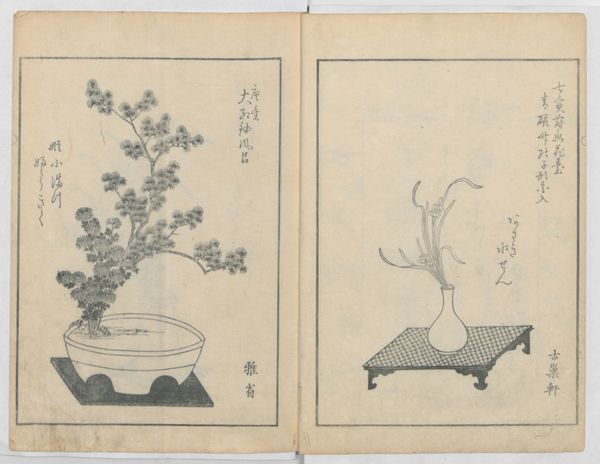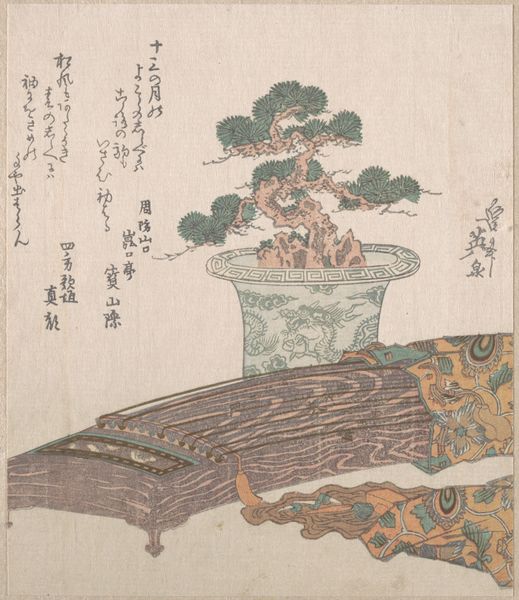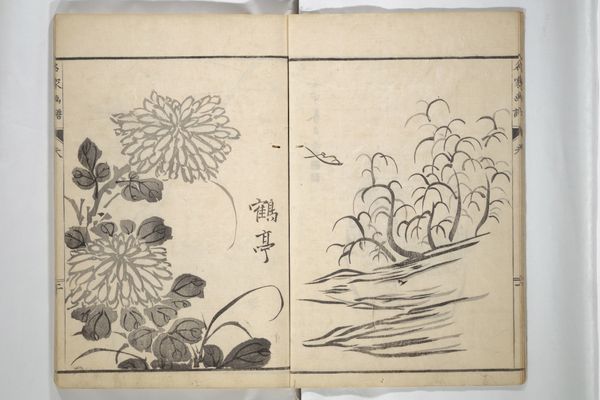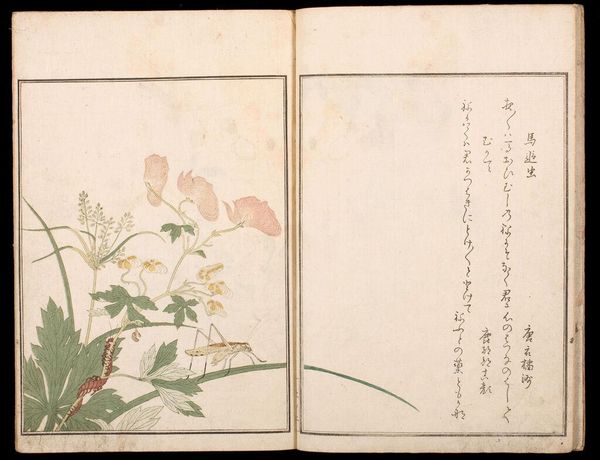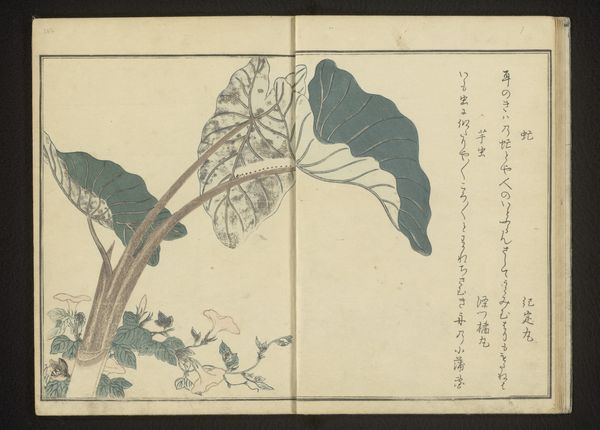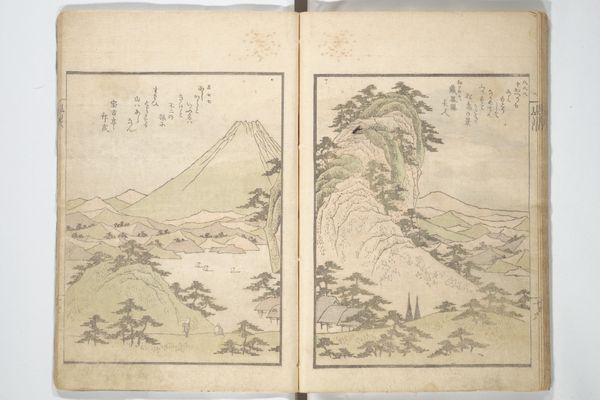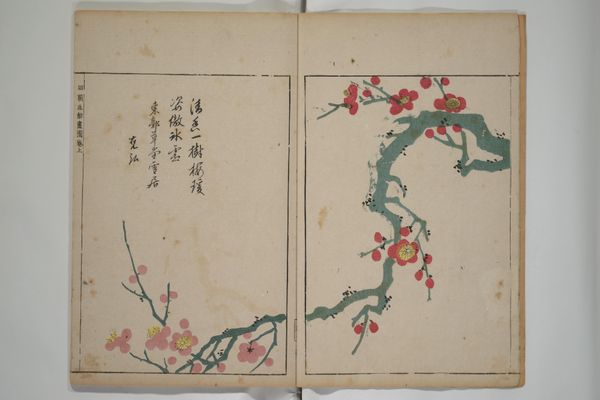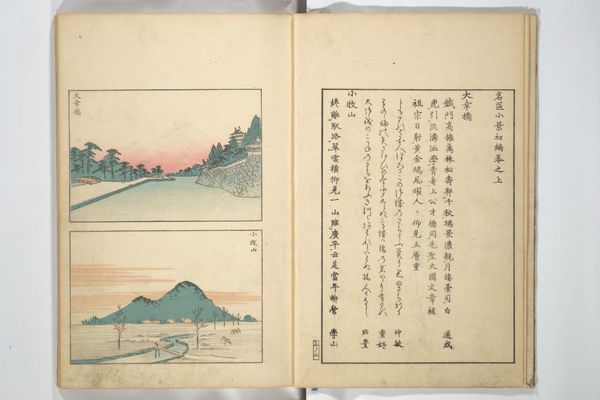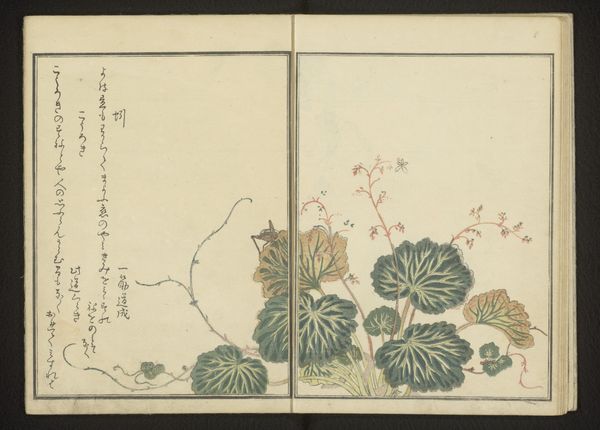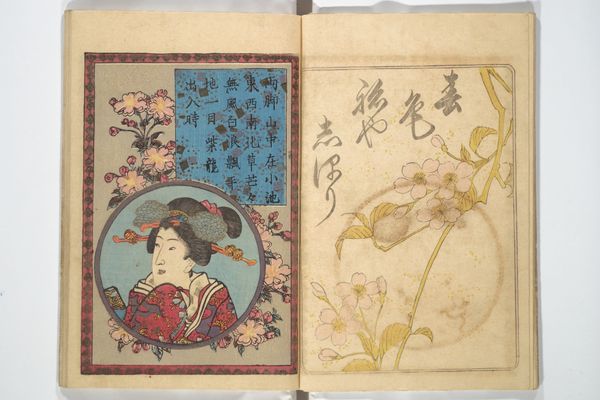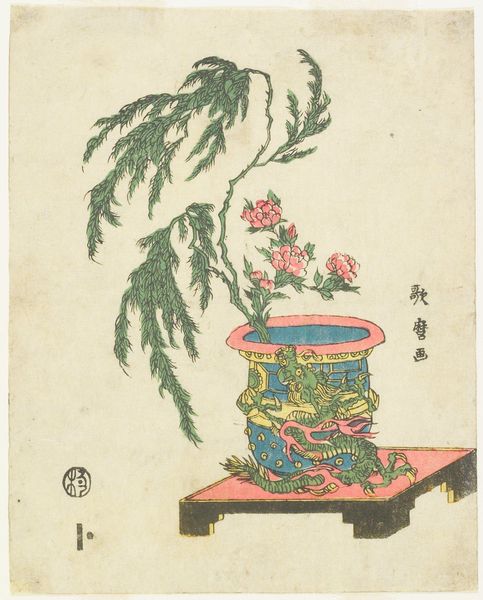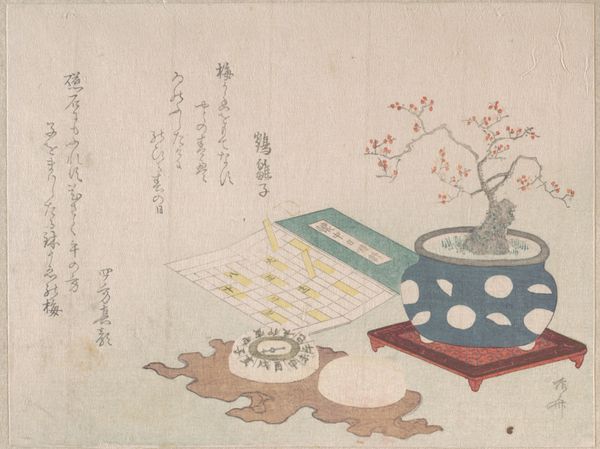
Views of Instructions for Bonsai along the Fifty-three Stations of the Tōkaidō 1848
0:00
0:00
painting, print, watercolor
#
painting
# print
#
book
#
asian-art
#
landscape
#
ukiyo-e
#
watercolor
Dimensions: each: 9 13/16 × 6 13/16 in. (25 × 17.3 cm)
Copyright: Public Domain
Curator: Looking at this open book of prints from 1848, entitled *Views of Instructions for Bonsai along the Fifty-three Stations of the Tōkaidō*, attributed to Yoshishige, I immediately see how it reflects both miniaturization and journeys. What's your initial reaction? Editor: The bowls really strike me. They're these substantial, crafted objects, but they hold these impossibly contained landscapes. The craftsmanship in these porcelain objects stands in stark contrast to the natural scenes above. I want to know how each station along the Tokaido is being represented by specific materials? What do the plants signify about those localities? Curator: That's a compelling material perspective. I find the framing as "instructions" intriguing. It speaks to the art of bonsai, certainly, but I wonder if it's also a comment on control, the deliberate shaping not just of nature but perhaps of social space along the Tokaido road, influencing perceptions and even travel itself. How are these idyllic scenes complicit with control? Editor: Right! It brings into question how landscape is manipulated as a social tool through controlled settings, as in both the landscapes, or within a porcelain form. These landscapes aren't being displayed within classical paintings, for example. Bonsai is about constraining, controlling. Curator: Exactly! Consider the role of the artist. Yoshishige isn’t just depicting landscapes, but is also providing a template, perhaps even advocating for this kind of controlled aesthetic. We need to examine the societal positionality and cultural responsibilities. It creates another framework on gender studies, social status, consumerism. It also addresses a question that if bonsai practices intersect and are influenced by western globalization during that era? How is Yoshishige portraying that social condition through this art? Editor: Thinking about Yoshishige's choices of materials and presentation, the printing itself is a crucial aspect of disseminating this aesthetic. Was printing this way efficient at making multiple Bonsais to be accessible or consumed by diverse patrons, especially in a way that emphasizes craft or domestic space through such forms? That bowl changes everything because it also indicates utilitarian and consumer product. It definitely changes a materialist's approach and insight to what’s really at hand for the artist when considering gender studies. Curator: A fascinating material lens, focusing not just on the *what* but the *how* and *for whom*. It does push me to reconsider the role of art making as embedded with capitalist incentives. It prompts me to dig even deeper when looking through intersectional social impacts. Editor: Absolutely, a look at not only aesthetics but how materials themselves mediate the viewing experience in social and economic practices that speak beyond beauty.
Comments
No comments
Be the first to comment and join the conversation on the ultimate creative platform.
